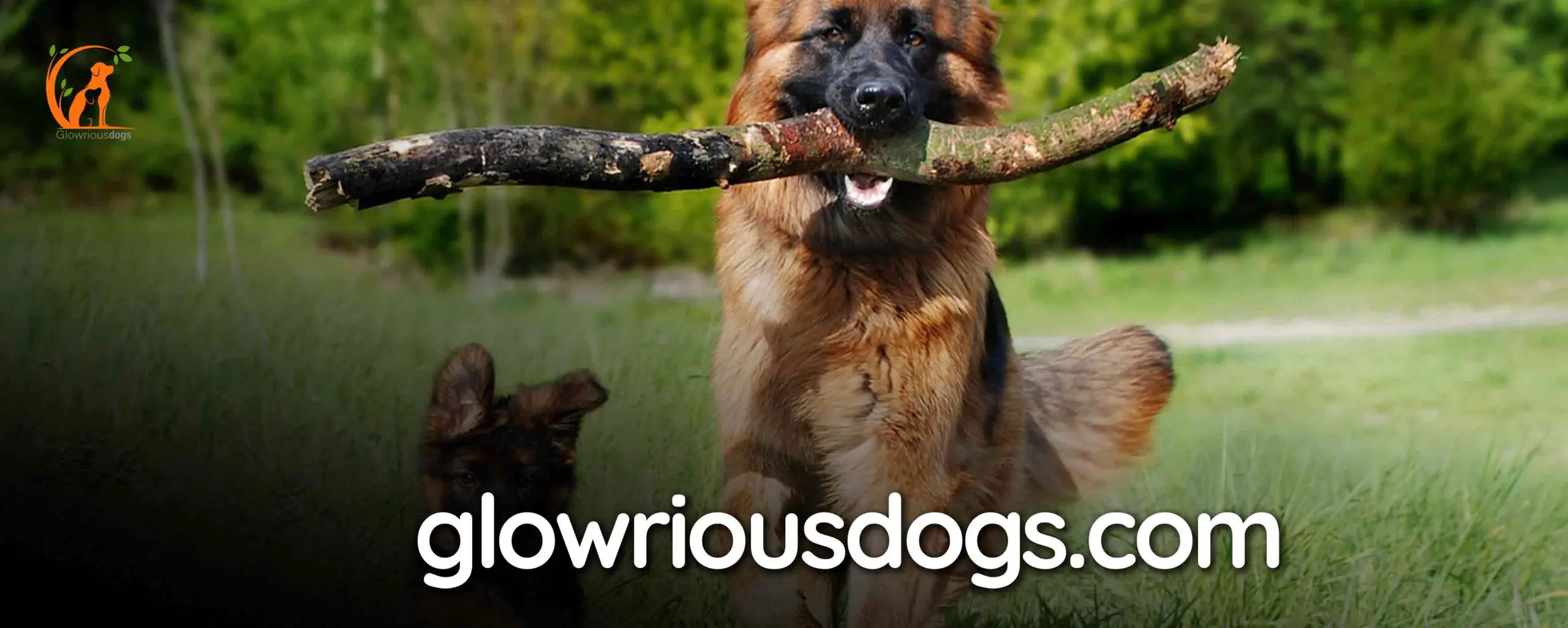Female German Shepherds typically stop growing by the age of 18 to 24 months. German Shepherds are a popular breed known for their intelligence, loyalty, and strength.
If you are considering bringing a female German Shepherd into your family, you may be wondering when she will reach her full size. Female German Shepherds typically stop growing by the age of 18 to 24 months. During this time, they go through various stages of development, from puppyhood to adolescence and finally adulthood.
It is important to provide them with a balanced diet and regular exercise during this period to support their growth and ensure their overall well-being. Understanding the growth timeline of your female German Shepherd can help you provide appropriate care and anticipate their adult size.
Factors Affecting The Growth Of Female German Shepherds
Female German Shepherds typically stop growing between 18 to 24 months of age. Factors influencing their growth include genetics, nutrition, exercise, and overall health. Providing a well-balanced diet and regular vet check-ups can help ensure their growth and development.
Female German Shepherds, like all dogs, go through various stages of growth as they mature. The growth of a female German Shepherd is influenced by several factors, including genetics and breed standards, nutrition and diet, and exercise and physical activity.
Let’s delve into each of these factors in more detail:
Genetics And Breed Standards
- The genetics of a female German Shepherd play a crucial role in their growth. Breeders carefully select dogs with desirable physical traits to ensure that these traits are passed down to future generations.
- German Shepherds have specific breed standards set by kennel clubs and breed organizations. These standards outline the ideal size, proportion, and overall structure of the breed.
- Within these standards, female German Shepherds are expected to reach their adult height and weight by a certain age. These guidelines help ensure consistency in the breed’s appearance and functionality.
Nutrition And Diet
- Proper nutrition is essential for the healthy growth and development of a female German Shepherd. A balanced diet that meets their nutritional needs is crucial during their growth stages.
- Puppies require a diet rich in protein, vitamins, and minerals to support their rapid growth. As they transition to adulthood, the diet should be adjusted to maintain their optimal weight and muscle mass.
- Overfeeding or feeding a diet lacking essential nutrients can lead to growth abnormalities and an increased risk of orthopedic issues. It is important to consult with a veterinarian to determine the appropriate diet for your female German Shepherd at each stage of their growth.
Exercise And Physical Activity
- Exercise and physical activity play a significant role in the growth and development of female German Shepherds. Regular exercise helps build strong muscles, promotes healthy joint development, and maintains overall fitness.
- However, it is crucial to strike a balance between exercise and rest to prevent overexertion and potential injuries. Avoid high-impact activities like intense jumping or excessive running on hard surfaces, especially during the growth stages when their bones are still developing.
- Age-appropriate exercise, such as frequent walks, interactive play sessions, and gentle training, is recommended to keep female German Shepherds active and stimulated without putting unnecessary stress on their developing bodies.
Remember that every female German Shepherd is unique, and growth rates may vary. Monitoring their growth, providing a nourishing diet, and ensuring appropriate exercise will help them grow into healthy, strong adults. If you have any concerns about your female German Shepherd’s growth, consult with a veterinarian for personalized advice and guidance.
Stages Of Growth In Female German Shepherds
Female German Shepherds go through distinct stages of growth, with most reaching their full height by 12-16 months and reaching physical maturity between 18-24 months. However, their overall development may vary based on genetics and individual factors.
Puppy Stage: Birth To 6 Months
During the puppy stage, female German Shepherds go through rapid growth and development. Here are some key characteristics and milestones to expect during this stage:
- Growth: Puppies experience significant growth during the first few months of their lives. They gain weight quickly and their bodies start to take shape.
- Teeth: At around 2 to 4 weeks, puppies start getting their baby teeth, also known as deciduous teeth. These will eventually be replaced by their permanent teeth.
- Socialization: This is a crucial period for socializing your puppy. Expose her to various environments, people, and other animals to help her develop proper social skills.
- Training: Basic training should begin early on. Teach your puppy commands such as sit, stay, and come. Positive reinforcement is key to instilling good behavior.
- Feeding: A well-balanced diet is crucial during this stage to ensure proper growth and development. Consult your veterinarian for guidance on feeding schedules and portion sizes.
Adolescence Stage: 6 Months To 2 Years
As your female German Shepherd enters adolescence, she will continue to grow both physically and mentally. Here are some notable characteristics and changes you can expect during this stage:
- Growth: While the rapid growth of puppyhood slows down, growth and development continue at a slightly slower pace during adolescence. Bones and muscles will continue to strengthen.
- Energy Level: Adolescent female German Shepherds tend to have high energy levels. Regular exercise and mental stimulation are essential to keep them physically and mentally healthy.
- Behavior Changes: Hormonal changes during this stage may lead to shifts in behavior. Your dog’s temperament and personality may start to become more apparent.
- Training: Adolescent dogs benefit from consistent training and reinforcement of commands. Positive reinforcement-based training methods are particularly effective during this stage.
- Socialization: Continue to expose your German Shepherd to different people, animals, and environments to bolster their social skills. It’s crucial to maintain positive experiences.
Adult Stage: 2 Years And Beyond
By the time your female German Shepherd reaches adulthood, she has reached her full size and maturity. Here are some aspects to consider during this stage:
- Physical Development: By the age of two, most female German Shepherds have reached their full size and physical development. They typically weigh between 50 and 70 pounds and stand around 22 to 24 inches tall at the shoulder.
- Mental Maturation: During adulthood, German Shepherds continue to mentally mature. They become more confident, calm, and focused. This stage is ideal for more complex training.
- Diet and Exercise: As an adult, your German Shepherd’s nutritional needs may change. Speak to your vet about transitioning to an adult dog food formulated for large breeds. Regular exercise and play sessions remain crucial for their well-being.
- Health Monitoring: Regular check-ups with your veterinarian are essential to monitor your dog’s overall health. Vaccinations, dental care, and parasite prevention should be maintained.
- Lifespan: Female German Shepherds typically live between 9 and 13 years, but with proper care, they can enjoy a longer life filled with love and companionship.
Remember, each German Shepherd may develop at her own pace. Pay attention to her individual needs and consult with your veterinarian for personalized advice.
The Average Size And Height Of Female German Shepherds
Female German Shepherds typically stop growing between the ages of 18 to 24 months. They reach their average size of 22 to 24 inches at the shoulder and weigh around 50 to 70 pounds.
Female German Shepherds are known for their majestic stature and impressive physical appearance. As a dog owner or enthusiast, it’s important to understand their growth patterns and what to expect in terms of size and height. In this section, we’ll explore the average size and height of female German Shepherds, as well as how to recognize potential growth abnormalities.
Growth Patterns And Growth Plates
Female German Shepherds go through various growth stages as they develop into adults. Understanding these patterns is crucial for providing appropriate care and ensuring their healthy growth. Here are some key points about growth patterns and growth plates in female German Shepherds:
- German Shepherds typically experience their most rapid growth during the first year of their life.
- The growth plates, also known as the epiphyseal plates or growth centers, play a vital role in the dog’s skeletal and muscular development.
- Growth plates are made of cartilage and are responsible for bone lengthening. They are particularly vulnerable to injury or damage during periods of rapid growth.
- The growth plates usually close and harden by the time the dog reaches 12 to 16 months of age.
- It’s essential to provide a balanced diet, regular exercise, and appropriate veterinary care during the growth phase to ensure proper development and growth plate health.
Typical Height And Weight Ranges
Female German Shepherds are medium to large-sized dogs, known for their strong and athletic build. Here are the typical height and weight ranges for adult female German Shepherds:
- Height: On average, female German Shepherds stand between 22 to 24 inches (56 to 61 cm) at the shoulder.
- Weight: The ideal weight range for female German Shepherds is around 50 to 70 pounds (23 to 32 kg).
- Keep in mind that these ranges are general guidelines, and individual variations can occur depending on genetics, diet, and overall health.
Recognizing Size Discrepancies And Growth Abnormalities
While each dog is unique and may have some differences in size and growth rate, it’s important to monitor for any significant size discrepancies or growth abnormalities. Here are some signs that may indicate potential issues:
- Extremely slow or stunted growth compared to the average growth rate.
- Significant size differences between littermates or dogs of the same age.
- Crooked or deformed limbs that affect mobility.
- Joint pain or lameness during or after physical activity.
- Unexplained weight loss or poor appetite.
If you notice any of these signs or have concerns about your female German Shepherd’s growth, it’s crucial to consult with a veterinarian. Early detection and appropriate intervention can help address any underlying health issues and ensure your dog’s long-term well-being.
Remember, providing proper nutrition, exercise, and regular vet check-ups are key to supporting healthy growth in female German Shepherds. By understanding the average size and height ranges and recognizing potential growth abnormalities, you can ensure your furry companion thrives throughout her life.
Signs That Your Female German Shepherd Has Stopped Growing
Female German Shepherds typically stop growing around 18 to 24 months of age. Signs that your female German Shepherd has stopped growing include a stabilized weight, fully formed hips, and no noticeable increase in height.
German Shepherds are known for their impressive size and stature, but like all dogs, they go through a growth process. If you’re wondering when your female German Shepherd will stop growing, keep an eye out for these signs:
Physical Indications
- Steady weight gain: Once a German Shepherd reaches her full size, her weight will remain relatively stable. If you notice that your female German Shepherd’s weight has leveled off for several months, it could indicate that she has reached her full growth potential.
- Length of the legs: A dog’s legs tend to grow faster than the rest of their body. If your female German Shepherd’s legs appear proportionate to her body size and no longer seem to be getting longer, this could be a sign that she has finished growing.
- Growth plate closure: Growth plates are soft areas of cartilage found at the end of long bones. As a German Shepherd pup matures, these growth plates gradually close. A veterinarian can assess X-rays to determine if your female German Shepherd’s growth plates have fused, indicating the end of her growth phase.
Behavioral Changes
- Calmer demeanor: Young German Shepherds tend to have boundless energy, but as they reach adulthood, they often become calmer and more settled. If your female German Shepherd’s behavior has leveled off, with fewer high-energy bursts, it may suggest that she has finished growing.
- Less interest in play: As German Shepherds grow, their playfulness may decrease. If your female German Shepherd shows less interest in playing and seems content with her usual exercise routine, it could be a sign that she has reached her full size.
Veterinary Assessment And Confirmation
- Evaluation by a veterinarian: To get a definitive confirmation, consult with your veterinarian. They can examine your female German Shepherd’s growth plates and perform a thorough physical assessment to determine if she has stopped growing.
Remember, every dog is unique, and the timing of growth completion may vary. If you have any concerns about your female German Shepherd’s growth or overall health, don’t hesitate to consult with your trusted veterinarian.
When To Expect The Growth To Stop In Female German Shepherds
Female German Shepherds typically stop growing around 18 to 24 months of age. During this time, they experience rapid growth in height and weight until they reach their adult size.
Female German Shepherds are known for their remarkable growth rate, but just like any other dog breed, they eventually reach a point where their growth comes to a halt. Understanding when this growth stops is essential for dog owners, as it helps them anticipate their pet’s needs and ensure they receive the appropriate care during this crucial phase.
In this section, we will explore the variations based on genetic factors that can influence the growth of female German Shepherds, factors that may delay or prolong their growth, and the importance of having patience during this process.
Variations Based On Genetic Factors:
- Genes play a significant role in determining the growth rate of female German Shepherds.
- The size of the parents can impact the size of the progeny, as larger parents tend to have larger puppies.
- Some German Shepherds may reach their full size quicker due to genetic factors, while others may take a bit longer to reach their full potential.
- The influence of genetics can result in variations in growth patterns and final size among female German Shepherds.
- It’s important to note that while genetics provide a blueprint, environmental factors such as diet and exercise also contribute to a dog’s overall growth and development.
Factors Delaying Or Prolonging Growth:
- Nutrition: A well-balanced diet with appropriate nutrients is crucial for proper growth in female German Shepherds. Inadequate nutrition can lead to stunted growth or delayed development.
- Hormonal Factors: Hormonal imbalances or reproductive issues can potentially impact the growth rate of females. It’s recommended to consult with a veterinarian if you suspect any hormonal irregularities in your dog.
- Health Conditions: Certain health conditions such as bone disorders or thyroid problems can delay or affect the growth of female German Shepherds. Regular veterinary check-ups are important to identify and address any underlying health issues.
- Exercise and Physical Activity: The level of exercise and physical activity can also have a direct impact on the growth rate of female German Shepherds. Overexertion or insufficient exercise can hinder their growth potential.
Understanding The Importance Of Patience:
- Female German Shepherds can continue to grow until they reach the age of 2 to 3 years, with the bulk of their growth occurring within the first year.
- It’s crucial to be patient during this growth phase, as rushing the process can lead to potential health issues or developmental problems.
- Each dog is unique, and their growth rate may differ from the average. Comparing your dog’s growth to others can lead to unnecessary concerns.
- Regular veterinarian check-ups and monitoring of your female German Shepherd’s growth can help ensure they are progressing as expected.
- Providing a healthy diet, adequate exercise, and a loving environment will contribute to your pet’s overall well-being and growth.
As a responsible dog owner, it’s essential to understand that female German Shepherds reach their full growth potential at different ages. By considering the variations based on genetic factors, factors that may delay or prolong growth, and practicing patience, you can better care for your female German Shepherd and ensure they thrive as they reach their adult size.
Promoting Healthy Growth In Female German Shepherds
Female German Shepherds experience healthy growth until they reach their full size, which is typically between 18 months to 2 years of age. During this time, their skeletal structure and overall body development continue to progress, ensuring their optimal physical capabilities as adult dogs.
When it comes to the growth and development of female German Shepherds, it is important to promote healthy habits to ensure they reach their full potential. Proper nutrition, appropriate exercise, mental stimulation, and regular veterinary check-ups are all crucial factors in their overall growth and well-being.
We will delve into each of these aspects in greater detail and provide valuable insights on how to support the healthy growth of female German Shepherds.
Proper Nutrition And Balanced Diet
A well-balanced diet plays a vital role in the growth and development of female German Shepherds. Here are some key points to keep in mind when it comes to their nutrition:
- Provide a high-quality, age-appropriate dog food that is specifically formulated for German Shepherds.
- Ensure that the diet consists of a good balance of protein, carbohydrates, fats, vitamins, and minerals.
- Feed them at regular intervals and avoid overfeeding to prevent excessive weight gain.
- Consider consulting with a veterinarian or canine nutritionist to determine the appropriate portion sizes and nutritional needs of your female German Shepherd.
- Provide fresh, clean water at all times to keep them hydrated.
Appropriate Exercise And Mental Stimulation
Regular exercise and mental stimulation are essential for the healthy growth and overall well-being of female German Shepherds. Here are some pointers to keep in mind:
- Engage your female German Shepherd in daily exercise routines that suit their age and physical abilities.
- Take them for brisk walks, allow them to run and play in safe, enclosed areas, or provide them with activities such as agility training or fetch games.
- Mental stimulation is equally important. Incorporate puzzle toys, obedience training, or scent work to keep their minds engaged.
- Avoid excessive exercise, especially during their growth phase, as it may lead to joint or bone problems. Consult with a veterinarian to determine the appropriate exercise regimen.
Regular Veterinary Check-Ups And Monitoring
Regular veterinary check-ups are crucial for monitoring your female German Shepherd’s growth and detecting any potential health issues. Here’s what you need to know:
- Schedule frequent visits to the veterinarian to ensure your female German Shepherd’s growth is on track and to address any concerns.
- Vaccinations, deworming, and preventive treatments should be administered as recommended by the veterinarian.
- Regular check-ups allow for early detection of potential health problems, such as orthopedic issues or developmental abnormalities.
- Maintain a record of your female German Shepherd’s growth milestones and any noticeable changes in behavior or appearance.
- Routinely monitor their weight, body condition, and overall health to make necessary adjustments to their diet and exercise routine.
By following these guidelines and promoting healthy habits through proper nutrition, exercise, mental stimulation, and regular veterinary care, you can help support the healthy growth and development of your female German Shepherd. Remember, a healthy dog is a happy dog!
Caring For A Fully Grown Female German Shepherd
Female German Shepherds typically stop growing between the ages of 16 and 24 months. It’s important to provide proper nutrition and exercise during this time to support their growth and development.
German Shepherds are large, intelligent dogs that require proper care to maintain their well-being as they reach adulthood. Caring for a fully grown female German Shepherd involves understanding their maintenance exercise and activity levels, aging-related health concerns, and adjusting their nutritional needs.
Let’s explore each of these aspects in detail:
Maintenance Exercise And Activity Levels:
To keep your fully grown female German Shepherd healthy and happy, it is crucial to provide regular exercise and engage them in stimulating activities. Here are some key points to consider:
- Daily exercise: Aim for at least 60 minutes of exercise daily to prevent weight gain and promote a healthy physique.
- Physical activities: Include activities like brisk walks, jogging, hiking, or playing fetch to stimulate their minds and keep them physically active.
- Mental stimulation: German Shepherds are intelligent dogs that thrive on mental challenges. Incorporate obedience training, puzzle toys, and interactive games to keep their minds sharp.
- Supervised playtime: Engage in interactive play sessions to strengthen the bond with your German Shepherd and provide them with a sense of companionship.
Aging-Related Health Concerns:
As female german shepherd dogs age, they may be prone to certain health issues. Here are some common aging-related health concerns and how to address them:
- Joint problems: German Shepherds are prone to joint conditions like hip and elbow dysplasia. Regular exercise, a balanced diet, and maintaining a healthy weight can help minimize the risk.
- Dental health: Tooth decay and gum disease can be common in older dogs. Regular teeth brushing and dental check-ups are essential for maintaining their oral hygiene.
- Vision and hearing loss: As dogs age, their vision and hearing abilities may decline. Regular veterinary check-ups can help diagnose and manage any issues.
- Regular veterinary check-ups: Schedule annual check-ups to monitor your German Shepherd’s overall health, address any concerns promptly, and discuss preventive care routines.
Adjusting Nutritional Needs:
Proper nutrition is crucial for the overall health of your fully grown female German Shepherd. Adjust their diet based on their age, weight, activity level, and any specific health conditions they may have. Consider the following points:
- High-quality dog food: Feed your German Shepherd a balanced diet that is rich in protein, vitamins, and minerals. Look for dog food specifically formulated for large breed dogs.
- Portion control: Avoid overfeeding to prevent obesity. Adhere to feeding guidelines provided by the dog food manufacturer and consult your veterinarian for personalized recommendations.
- Nutritional supplements: Discuss with your veterinarian the need for any additional supplements to support joint health, coat quality, or any specific dietary requirements.
- Hydration: Ensure access to clean, fresh water at all times to promote proper hydration.
By focusing on maintenance exercise and activity levels, addressing aging-related health concerns, and adjusting nutritional needs, you can provide optimal care for your fully grown female German Shepherd, enhancing their quality of life and overall well-being. Remember to consult your veterinarian for specific advice tailored to your dog’s individual needs.
Conclusion
Understanding the growth patterns of female German Shepherds is essential for dog owners. By knowing when these magnificent dogs stop growing, we can ensure their overall health and well-being. As mentioned earlier, female German Shepherds reach their skeletal maturity around 18-24 months.
However, they may continue to fill out and develop muscles until 2-3 years of age. It’s important to note that individual variations exist, and factors such as diet, exercise, and genetics can influence a dog’s growth. Regular veterinary check-ups and a balanced diet are crucial during this period to support healthy growth.
Remember to provide ample exercise, mental stimulation, and a loving environment to promote the best development for your furry friend. By being aware of these growth stages, you can enjoy the journey as your female German Shepherd blossoms into a magnificent adult dog.
Frequently Asked Questions On When Do Female German Shepherds Stop Growing
How Big Will A Female German Shepherd Get?
A female German Shepherd can grow to a size of about 22-24 inches tall and weigh between 50-70 pounds.
Is My German Shepherd Fully Grown At 6 Months?
No, your German Shepherd is not fully grown at 6 months.
Do Female German Shepherds Grow Slower?
Yes, female German Shepherds typically grow at a slightly slower pace compared to males.
What Is The Average Weight Of A Female German Shepherd?
The average weight of a female German Shepherd is around 50-70 pounds.











